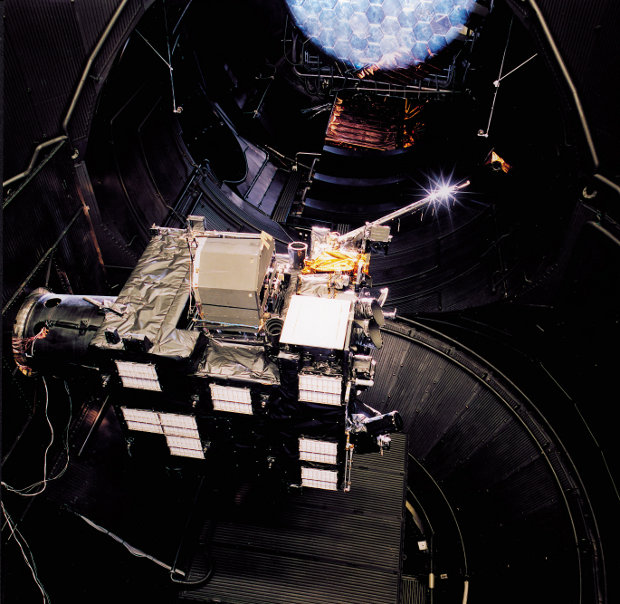
Yesterday it was almost evening in Europe when ESA received the first signal from the spacecraft Rosetta. It confirmed that it regularly awakened after spending about two and a half years in hibernation. The testing phase started to ensure that all of its instruments are functioning properly. Rosetta is now en route to the comet 67P/Churyumov-Gerasimenko.
The Rosetta space probe is named after the Rosetta stone, which was crucial to decipher the ancient Egyptians hieroglyphs. In the case of the probe, the hope is that it will help to decipher a language of physics and chemistry as it’s meant to help us understand what the early solar system was like before the planets were formed.
The Rosetta space probe includes the Philae lander, named after the island in the Nile River where an obelisk was found that helped decipher the Rosetta Stone. It will land on the comet 67P/Churyumov-Gerasimenko using two harpoons to anchor itself to its surface. Its mission will last at least a week but could also be extended for a few months.
The Rosetta mission is the culmination of the studies of comets started in the ’80s, when the approach of the famous Halley’s comet brought ESA to launch its first space probe into deep space. NASA had also plans for the study of comets but budget problems have forced the American agency to set them aside. NASA has still provided some instruments, the collaboration of its scientists and the Deep Space Network for communications to the Rosetta mission.
Originally, the comet to be studied was supposed to be the 46P/Wirtanen but a failure in the launch of an Ariane 5 rocket in December 2002 caused the stop of the launches until the end of the investigation on the problem. The project was modified and the Rosetta space probe was launched together with the Philae lander on February 26, 2004 on an Ariane 5 rocket.
The first part of the mission of the Rosetta space probe have already been accomplished. On September 5, 2008, the probe flew by the asteroid 2867 Šteins and on July 10, 2010 it flew by the asteroid 21 Lutetia. In both cases, several photographs were taken.
In June 2011, the Rosetta spacecraft was put into a state of hibernation to conserve energy and fuel. That’s because at that point its distance from the Sun was such that the energy received by its solar panels it wasn’t enough for it to remain in full operation. Only a few indispensable systems have been active especially to maintain their temperature high enough to prevent failures.
The Rosetta space probe’s orbiter has 12 instruments and the Philae lander has 9 more. These are cameras, spectrographs and several other analyzers that will be used to study the comet 67P/Churyumov-Gerasimenko much more thoroughly than it’s ever been done before.
The first images of the comet 67P/Churyumov-Gerasimenko are expected to be taken in May 2014. The actual rendezvous is scheduled for August. It’s a mission that goes far beyond whatever has been attempted before so ESA scientists and engineers will have to face several challenges. The result will be a greater understanding of comets with new information about the period when the solar system formed.
[ad name=”eBayUSUKAstronomy”]


Permalink